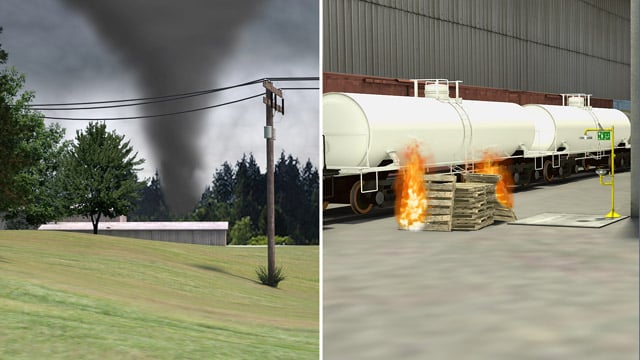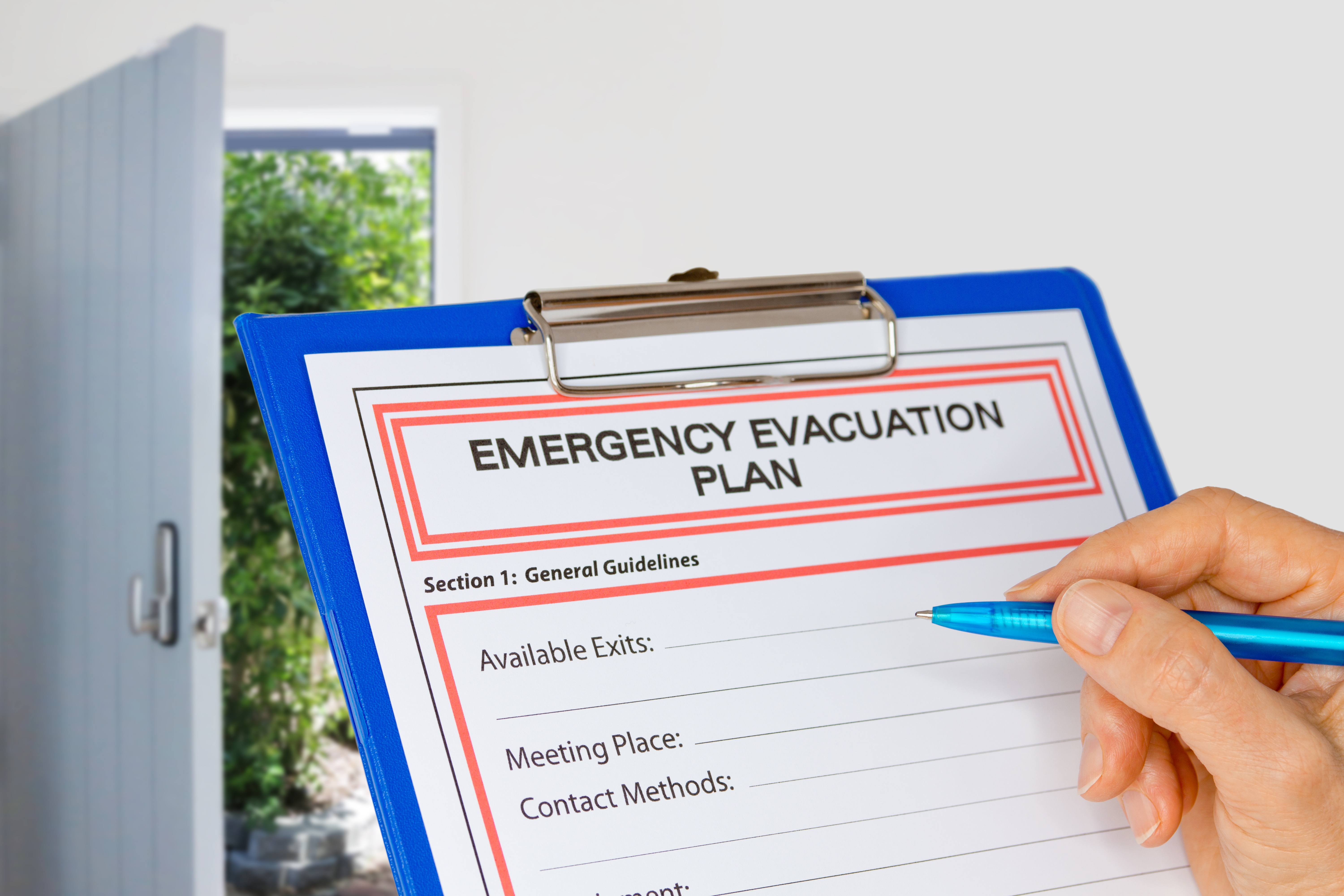April 25, 2013 4 min read
Understanding the importance of emergency exit routes
Industry:
Solution:
Emergency exit routes are important because they provide a clear, safe way to evacuate a building in case of a crisis or disaster. First responders such as fire or police may also utilize emergency exits to enter a building during a disaster or crisis. Identifying and maintaining emergency exits and emergency exit routes are an important part of your workplace Emergency Action Plan (EAP). To help keep you and your workers out of harm’s way, the U.S. Occupational Safety and Health Administration (OSHA) created a fact sheet that will allow you to learn more about these important means of egress.
What is an emergency exit route?

OSHA defines an emergency exit route as a continuous and unobstructed path of exit travel from any point within a workplace to a place of safety.
What are the three parts of an exit route?
- Exit access – The portion of the route that leads to an exit. OSHA requires that an exit access must be at least 28 inches wide at all points.
- Exit – The exit is generally separated from other areas to provide a protected way of travel to the exit discharge.
- Exit discharge – Leads directly outside or to a street, walkway, refuge area, public way, or open space with access to the outside.
Why must fire exits and exit routes be clear and unblocked?
Exit routes and exit access (i.e. fire doors) must be clear and unblocked to allow for quick and safe exit in case of an emergency. Blocking and obstructing exit doors and routes will create delay, panic, and confusion in the case of an emergency and acts as a safety hazard. OSHA regulations require that exit routes are unobstructed by materials, equipment, locked doors, or dead-end corridors and also include proper lighting and other elements.

How many exit routes does a workplace need to have?
In most cases, OSHA mandates that there be at least two emergency exit routes. However, more may be required depending on the number of employees and the size of the building. The only exception to this rule applies to smaller businesses where individuals can exit safely in the event of an emergency. In these cases, one route may be acceptable. As an employer, it’s your job to make sure that you adhere to federal regulations and base the number of routes in place on the size of your company.
What businesses are required to have an emergency action plan (EAP)?
OSHA strongly recommends that all workplaces with more than 10 employees develop a written Emergency Action Plan (EAP) to document the procedures and responses required by employees in the face of a disaster or crisis.
What is an emergency notification system?
In a crisis, communication is key. Deploying an emergency notification system (ENS) is a quick, reliable, and effective way to prevent incident escalation and maintain community safety.
Emergency notification systems (ENS) are one-way broadcast communication platforms designed to facilitate emergency preparedness and response.
We’ve written a more in-depth article on how rapid, reliable broadcast notifications enable organizations to prevent, manage, and address emergencies by keeping community members informed of relevant hazards and resulting guidance. Well worth a read!
What is emergency preparedness training?
Your workplace’s EAP must be made available on site for employees to review. OSHA also requires that employees are trained appropriately on the details of the plan. Emergency preparedness training should provide workers with an overview of the types of emergencies that may arise at their facility, how to respond to each situation, the names and numbers of parties who should be contacted if an emergency occurs, and more.
Vector Solutions’ training management software’s Emergency Planning course can help you better deliver emergency preparedness training throughout your worksites.










